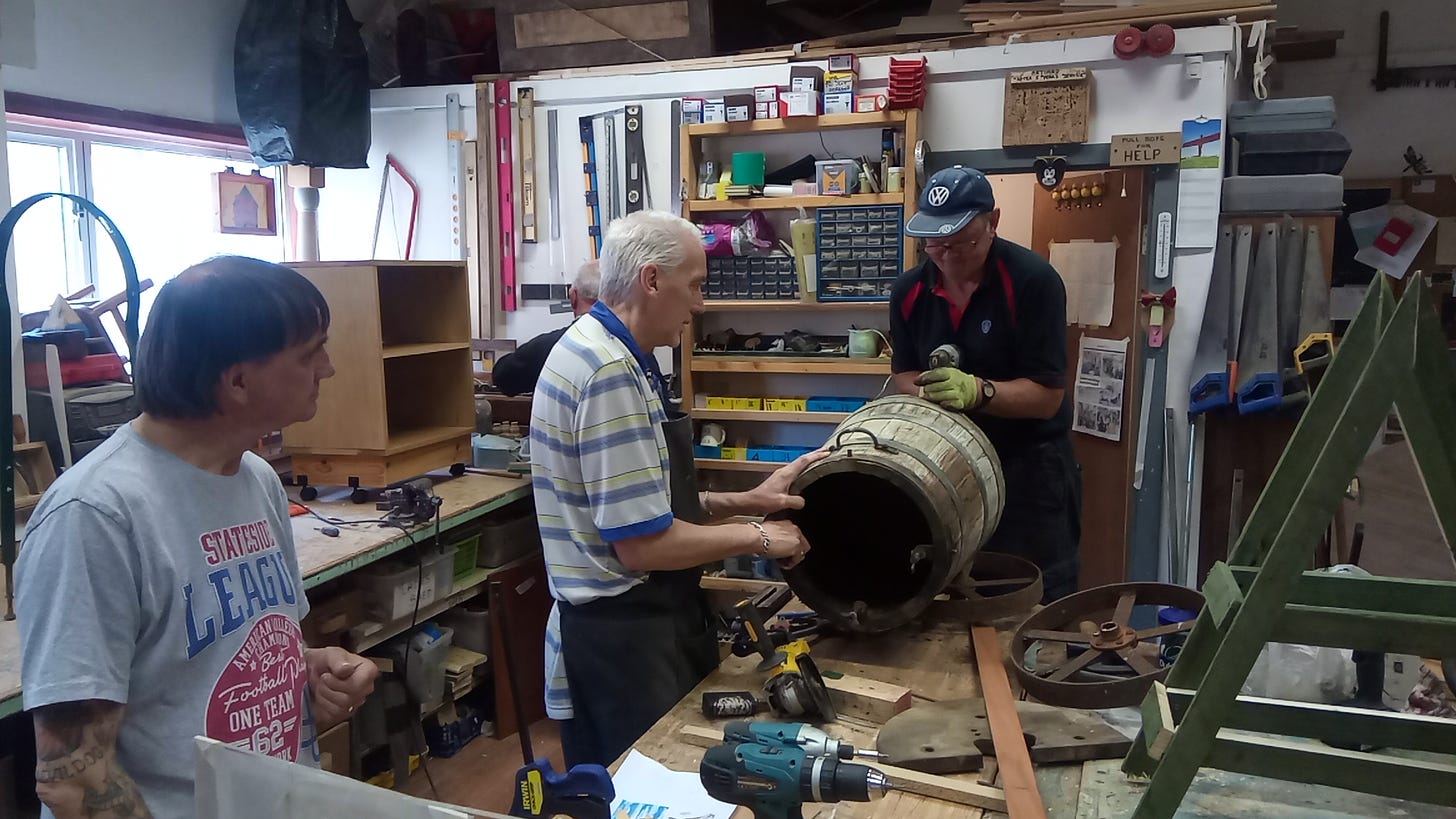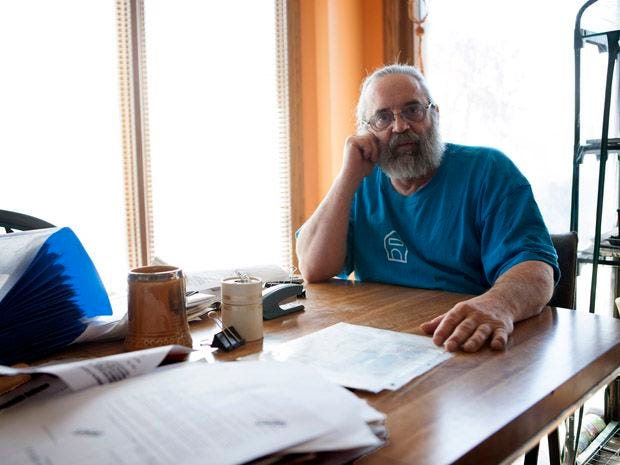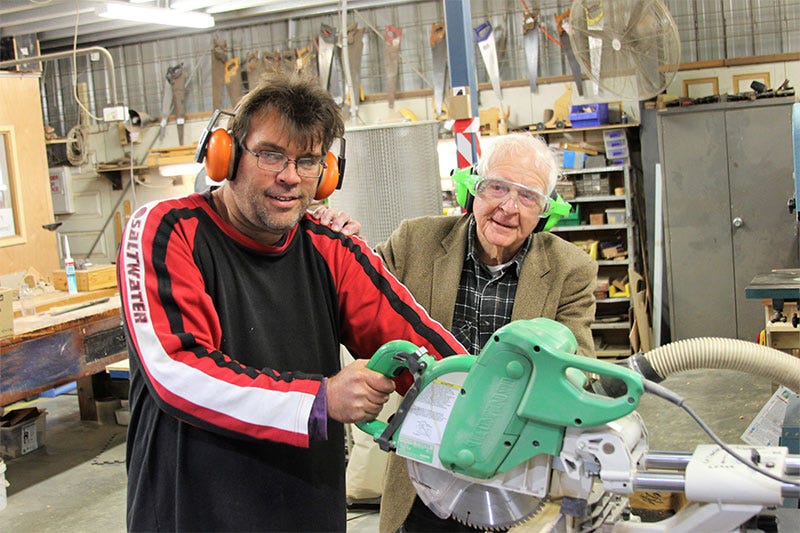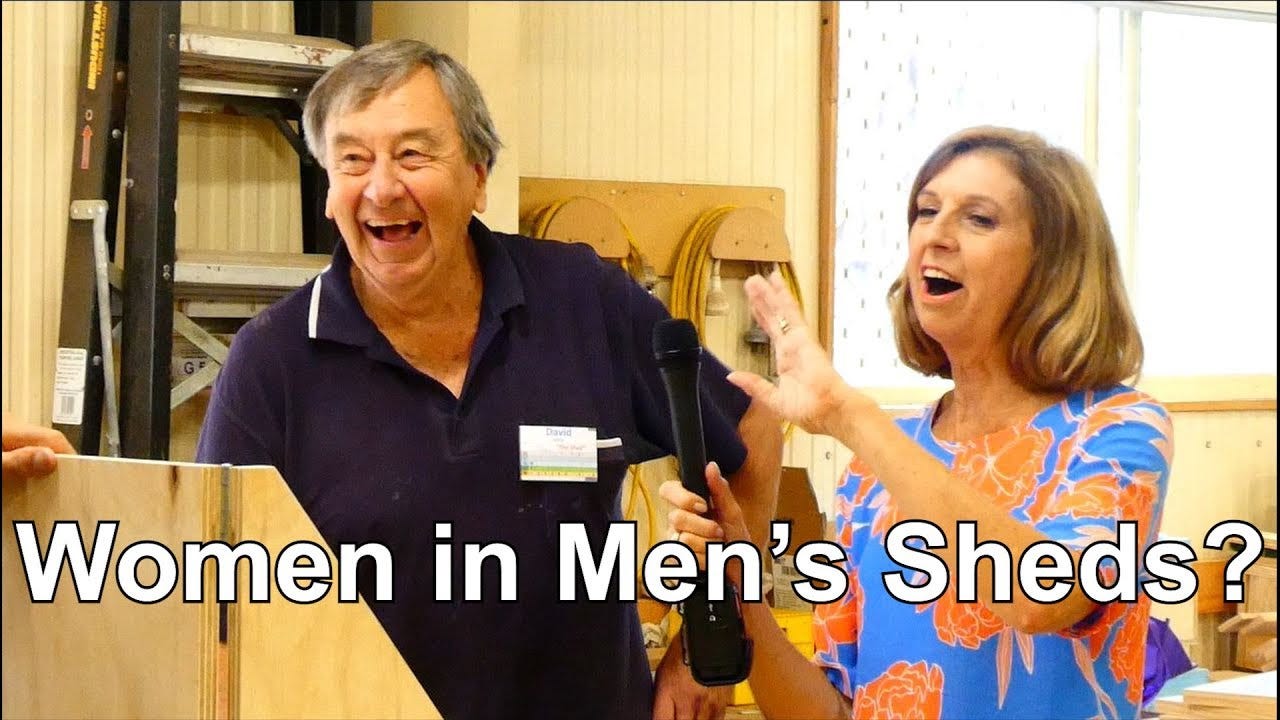Some years ago, feminist writer Jane Gilmore sounded a familiar note in “Why Don’t Men’s Rights Activists Fight for Men’s Rights?”
Gilmore alleged that men are being “let down by the advocates who are supposed to be acting on their behalf.” According to her, men’s rights activists are more interested in bashing women (figuratively if not literally) than in doing good for men.
“Men’s Rights Activists (MRAs) are a vocal bunch,” she sniffed in the 2016 article. “They’ve got websites and social media accounts and YouTube channels, all dedicated to what they misname as activism for men’s rights. But when their activism is only discussing men’s rights and masculinity in reference to feminism or violence against women, it’s not acting for men, it’s acting against women.”
Gilmore is so busy policing terms and chiding men for having opinions that she doesn’t mention what she’s done for men lately.
We’ve heard this fake lament many times. Women and men who have never lifted a finger for men are fond of dismissing any male-positive advocacy. My all-time favorite example was another Australian feminist, Jane Caro, who—in the same month that Gilmore published her smarmy piece—became annoyed that so much attention (meaning any at all) was being focused on boys’ difficulties in school. She wrote an article contending that the best thing one could do for boys was to “Stop giving them a leg-up in the outside world.” Boys’ problem was too much privilege. Caro was an all-too-familiar example of a heartless female pundit so consumed by sex grievance as to be unable even to pretend momentary sympathy for boys.
Of more consequence has been the decision by the American Southern Poverty Law Center (SPLC) to take an entrenched anti-male position on all men’s rights activism even while admitting that some of men’s problems are real. The SPLC’s website observes that
The website vilifies every men’s advocate mentioned, from the at-times provocative Paul Elam, whose use of satire the SPLC has willfully misinterpreted, to a soft-spoken moderate such as Warren Farrell, who has been attempting for years to establish a White House Council on Boys and Men (surely a “meaningful step” to address issues even by the SPLC’s rigorous metric). The website, which contends that men’s advocates see women as “genetically inferior,” even takes swipes at female MRAs Karen Straughan and Cassie Jaye. Conflating pick-up artists and incels with men’s advocates, it ends by warning against the alleged proliferation of “male supremacy hate groups,” i.e. men’s support groups (more on this later).
The SPLC’s targeting of men’s groups is fascinating in light of Gilmore’s highly similar claim about MRA failure. Gilmore too was willing to admit that there are some legitimate men’s issues (an admission she would likely never have made if not for men’s activism), but decried MRAs focus and methods. She was particularly annoyed by men’s advocates who dispute “the irrefutable data on the disproportionate number of female victims in domestic violence.” Such men, she charged, aren’t interested in “establishing services for issues that affect men,” for they are merely angry “that people believe women when they talk about the violence they’ve suffered at the hands of men, and […] that women are given the assistance they need to escape it.”
No wonder men’s advocates get fed up when tripe like this passes for informed opinion.
Gilmore doesn’t provide a single link to a single MRA, anywhere on the internet, engaging in what she accuses MRAs of doing. Yes, MRAs do—often patiently, meticulously—dispute feminist data on domestic abuse. Murray Strauss, among other academic researchers, has published on how feminist academics and leaders have persistently distorted and denied findings of gender symmetry in intimate partner violence. MRAs have every right to challenge false claims that hurt men seeking help. But I’ve never met a single men’s advocate who begrudged services to female victims or was indifferent to their plight. Gilmore’s contention that men only pretend to care about male victims is a grotesque projection.
The rest of Gilmore’s article sets out to delimit the allowable sphere of men’s activism. Such activism must not say anything that could be perceived as negative about women or about feminism. It must not contest feminists statistics, whether on intimate partner violence or anything else. Proper men’s activism, Gilmore makes clear, should focus only on those problems of men that can be seen as arising from damaging male behaviors and male qualities—in other words, on problems in which men are victims of themselves.
Here is the list that Gilmore provided:
“Men are four times more likely to suicide than women […]. Men are more likely to be murdered and assaulted than women, twice as likely to die from cancer and drug overdoses, and three times more likely to die in car accidents. A staggering 92 per cent of the more than 36,000 people in Australian prisons are men. Men are twice as likely to suffer from problem gambling addictions, and significantly more likely to suffer substance abuse than women.”
These are all fair game for MRAs, it seems, so long as they do not cast any blame for them on feminist policies and laws, or even on a generally feminist culture that sees men as defective and blameworthy.
When Earl Silverman, a Canadian MRA, killed himself in 2013 after struggling for years to keep running the shelter he had established for abused men and their children, feminist advocates roused themselves from their previous indifference to declare that, sad as the death was, no one was to blame but Silverman himself: certainly not the politicians in Canada who, influenced by feminist insistence that men are rarely victims, saw no reason to put public monies into a project to aid abused men.
A Salon writer could not hold herself back, writing just days after Silverman’s death, from pointing out how wrong he had been to allege that men were as often abused as women. In this, he had foolishly “perpetuat[ed] the Men’s Rights movement’s fiction that there’s any gender equity as far as violence and victims.” If Silverman had hoped his suicide might draw sympathetic attention to men’s needs, the feminists worked quickly to deny that possibility.
Gilmore probably didn’t know about Silverman (though his suicide had occurred just a few years before she wrote her article), but she would almost certainly have condemned him too. If things aren’t happening for men, she insists, it’s because MRAs are going about things the wrong way: they need to stop bitching about feminism and start to do some real work of the type that women have done so tirelessly: “Men who were truly being activists for men would, as women have for decades, be giving up careers and time to start volunteer-run refuges for the thousands of men at risk from these problems.”
The Gilmores of the world are always oblivious to the thousands of man-hours MRAs have spent on advocacy and volunteering. She didn’t even know, at the time of writing, that there already was a well-established Australian organization dedicated to men’s health. The Australian Men’s Health Forum (AMHF) had been in existence since 2001. Until 2017, the year after Gilmore’s article, it had been operating entirely on a volunteer basis. Focusing on many of the neutral issues that Gilmore approved, such as suicide, men’s cancers and heart disease, men’s mental health, workplace accidents, and substance abuse, it had frequently called for government assistance to address men’s problems. That Gilmore had probably never heard of the AMHF suggests both her ignorance about the Australian men’s scene and the low public visibility of almost all men’s organizations.
Gilmore singled out for praise only one group: the Australian Men’s Shed Association, which she approved particularly because “Nothing on the Men’s Shed website or program talks about women; it focuses only on issues of men’s health and well-being.” The Men’s Shed Association recognizes that many men prefer to work with other men, keeping busy and being productive, rather than to talk about feelings the way women typically do; it thus brings men together around physical projects.
Perhaps the shed movement met with Gilmore’s approval because it doesn’t seek to change laws or social practices; it is essentially a mop-up effort. Don’t get me wrong: I love the idea of men’s sheds, and I’m absolutely in favor of spaces, physical and otherwise, where men can be together without women’s interference. Ironically, that is exactly what the legions of websites, chat groups, and YouTube channels that Gilmore dislikes also exist to provide. Men being men in masculine spaces contributes directly to their mental health. What Gilmore neglects to mention is that even a-political groups such as the men’s sheds have no protection from feminist opposition and attempts at control.
Why would they? If YouTube channels and websites rouse Gilmore’s ire because they fail to kowtow to feminism, why would men’s sheds be left alone? As early as 2011, a feminist writer in The Guardian, Lucy Mangan, expressed her annoyance about the exclusion of women in the United Kingdom from men’s shed funding (“Why Women Need Sheds More Than Men”). After mentioning the origins of the men’s shed movement, she launched into a tirade: “I wondered then, and I wonder now, why it was decreed that men needed sheds more than women? Which sex has historically had the power to barricade itself in its study/club/recently conquered country and relax with a glass of port?”
The article proceeds in a predictable manner, making the case that any taxpayer money spent on men is money taken away from more deserving female recipients, an argument served up with generous helpings of self-pity and resentment:
“Yes, women need sheds far more than men. Where’s our charitable funding? I’m writing this in a freezing loft conversion and can hear husband and baby coming up the stairs to get me, though at least only one of them is crying at the moment. What I wouldn’t give for a dozen meters of muddy turf and a tangle of thorny thicket to deter them.”
Here was another well-informed, empathetic article by an equal rights advocate.
In advising MRAs to approach governments for funding, Gilmore didn’t take into account the bitter backlash her ideological sisters tend to set into motion against any positive male-focused initiative.
Mangan hadn’t thought to accuse the men’s sheds of being toxic, but no one should be surprised that the shed movement has been scrutinized on that front too. A 2017 academic study with a feminist title (“Counter and Complicit Masculine Discourse Among Men’s Shed Members”) worried that some men’s sheds subscribe to “dominant masculine values and ideals” because they prioritize male work and independence. The authors of the study were also concerned that the sheds did not seem to foster adequate racial diversity, given that most of the men who frequented the sheds were white. The study concluded by making suggestions about how the movement could open itself to a greater array of “masculinities.”
Unsurprisingly, even that approach wasn’t enough, as Mangan’s irritation began to manifest in other women. Bettina Arndt highlighted a few years ago how some sheds in Australia, under pressure from women, have now dropped the word men from their names to become The Shed, admitting women in order to fend off claims of exclusion (see Arndt’s excellent commentary and video). I don’t recall Jane Gilmore defending men’s groups from the incursion.
If all this fuss can be made about an avowedly non-political men’s organization, imagine the hyperventilating outrage over a political one. About two years ago, the Southern Poverty Law Center designated as a “male supremacist hate group” an online version of a men’s shed. Paul Elam co-founded, with Tom Golden, a Zoom men’s group now called XY Crew. With its motto “Men Building Men,” the group “is a community of men from around the world, most of whom have been negatively impacted by gynocentric, anti-male policies and law.” It conducts “daily online peer support group meetings.” It also offers a 24-hour Cyber Shed for men who want to hang out at other times. It’s not hard to see why the SPLC doesn’t like the group, as it already decided, years ago, that Paul Elam was a very bad man.
I have the privilege of hosting one of the XY Crew meetings. Most are loosely structured: men “check in,” giving an update on their lives. Some meetings are organized around specific issues, such as Paul’s Family of Origin group, or the Goals and Growth group. Meetings are occasionally political—most of the men identify as red pilled—but most of the time they consist of men talking and listening: “I hear you.” “That sounds lousy.” “Have you thought about trying …”. It’s hard to believe that the SPLC knows what happens at the meetings—anonymous lurkers are not accepted—or that, if it did know, it could legitimately designate anything in any meeting as male supremacist or hateful. A few of the men present are angry; some are broken-hearted. Many are working to get through a bad time. The SPLC seems keen to smear hundreds of good men simply for wanting to talk, without feminist oversight, to other men. The bigotry astounds.
As Gilmore’s touting of men’s sheds demonstrates, men are damned if they do and damned if they don’t: what one feminist recommends, another finds objectionable. Many feminists, knowing nothing about men’s issues, would prefer men be kept apart from one another and enjoined to silence. Those of us who seek solutions to men’s problems are used to all this by now and will carry on regardless; but we never quite get used to the gall of women like Gilmore lecturing us about appropriate activism. She should clean her own room.
**
If you’re interested in men’s rights activism, you might want to consider attending the International Conference on Men’s Issues, which will be held this summer (August 10-11, 2024) in Budapest, Hungary. Paul Elam has called these conferences “the most significant men’s mental health events that happen anywhere in the world.” See our promo conversation here. The deadline for purchasing tickets is April 12th.










Excellent Janice! Another chapter for your new book.... <hint hint>
Gilmore and most feminists have zero idea of what it takes to find support or funding for anything related to helping men. Here's a clue for Gilmore: finding support and funding for women is a downhill journey, but getting funding and support for men is a steep uphill journey. Anyone who has tried both will understand this immediately.
Some time ago now I was doing research in a university on factors that influence academic outcomes for students. This study focused on students from non-english speaking backgrounds and students from lower socioeconomic backgrounds and there was an underlying expectation that these were the students who would prove to be disadvantaged. What became clear from the data was that the students who were actually most disadvantaged were the young male students who had gone straight onto university from elite private boys schools. When I presented the results it seemed impossible for anyone to even hear what I was saying. They all kept talking about the disadvantage experienced by students from non english-speaking backgrounds even though the data showed that these students typically did better and most of them had been through Australian high schools and spoke English very well. The whole thing was bizarre.